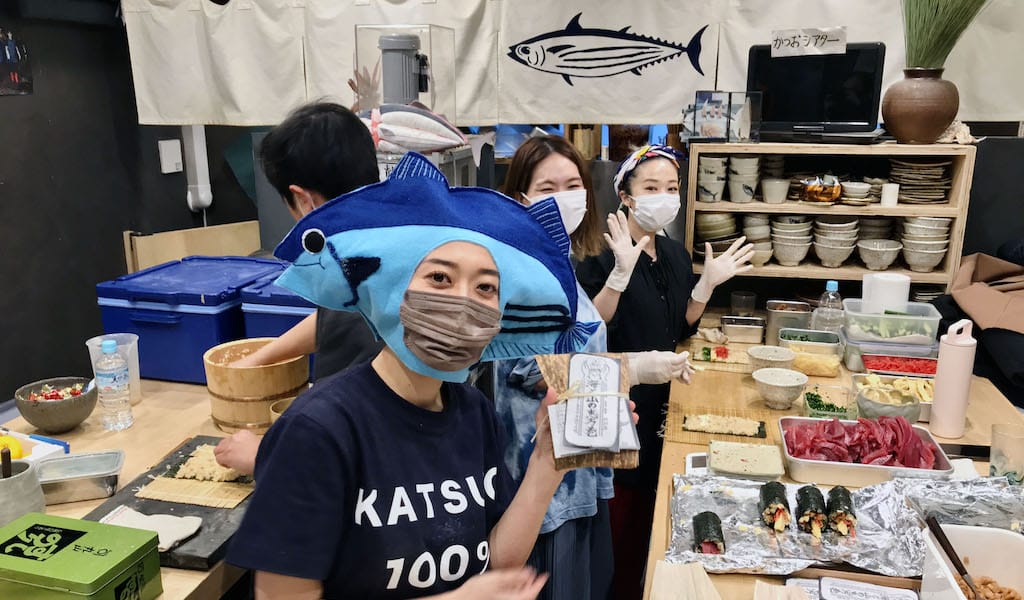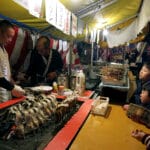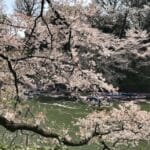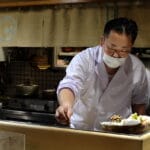It’s not every day you see someone’s face peeking out of the belly of a bright blue skipjack bonito (katsuo). You certainly don’t expect them to wear fish-shaped headgear while wrapping dozens of sushi rolls all morning. But this was how Mai Nagamatsu, katsuobushi evangelist and proprietor of breakfast diner Katsuo Shokudo, greeted us on February 3: her head looking like a fish at sea.
It was Setsubun, the first day of spring according to the old Japanese lunar calendar, itself based on the traditional Chinese calendar that divides a year into 24 solar terms. (These days, the lunar calendar is more a reminder of cultural practices and traditional markers of seasonal changes than a practical way to keep time.) The most common ritual practiced on Setsubun is mamemaki, where you throw roasted soybeans out of the front door or at someone in your family dressed up as a demon, shouting Oni wa soto! Fuku wa uchi! at them. Demons out! Fortune in! (Hopefully it also works for pandemics.)
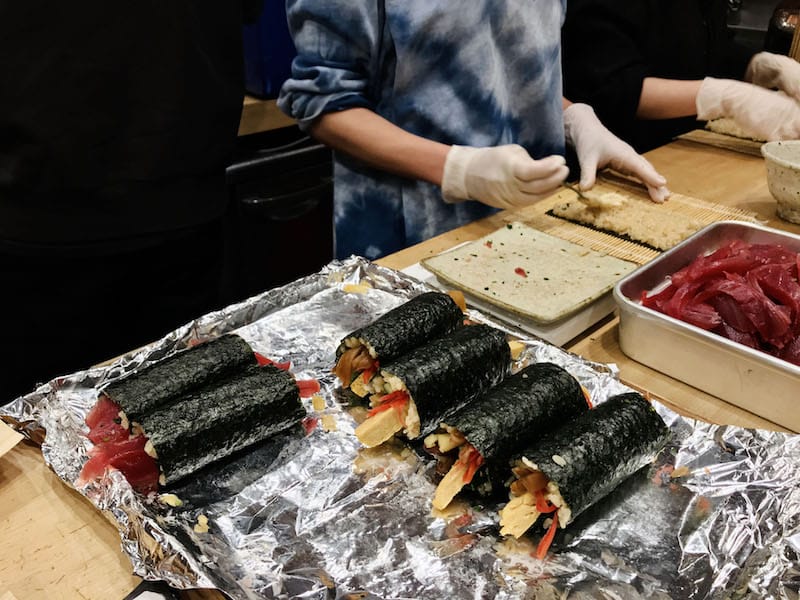
Another common practice is eating a whole, uncut sushi roll – ehōmaki 恵方巻, or “lucky direction roll” – in silence while facing a lucky direction, which changes every year. This year, it was north-northwest; the four directions are lined up against the 10 signs of the Chinese zodiac to determine the year’s lucky direction, which repeats in a five-year cycle. Ehōmaki are typically stuffed with up to seven “auspicious” ingredients to honor the Seven Gods of Good Fortune, including long, thin strips of kanpyō (dried calabash gourd) for longevity, or kyuri (cucumber), which sounds like “gaining nine advantages.” In other words, puns will bring you good fortune.
The origins of this custom are somewhat murky, and various theories abound. A likely contender: it began in Osaka’s geisha district during the early Taisho era (1912–1926), when people began eating pickle-wrapped seaweed rolls while facing a lucky direction during Setsubun. One study from the Journal of Comparative Folklore goes further, suggesting that it might have started as a mildly salacious game among courtesans in Osaka, whose clients would ask them to eat a whole uncut sushi roll as entertainment. No surprise, then, that some respondents in a recent Setsubun-themed survey said they didn’t eat ehōmaki because they thought it was “ungodly” or “heretical.”
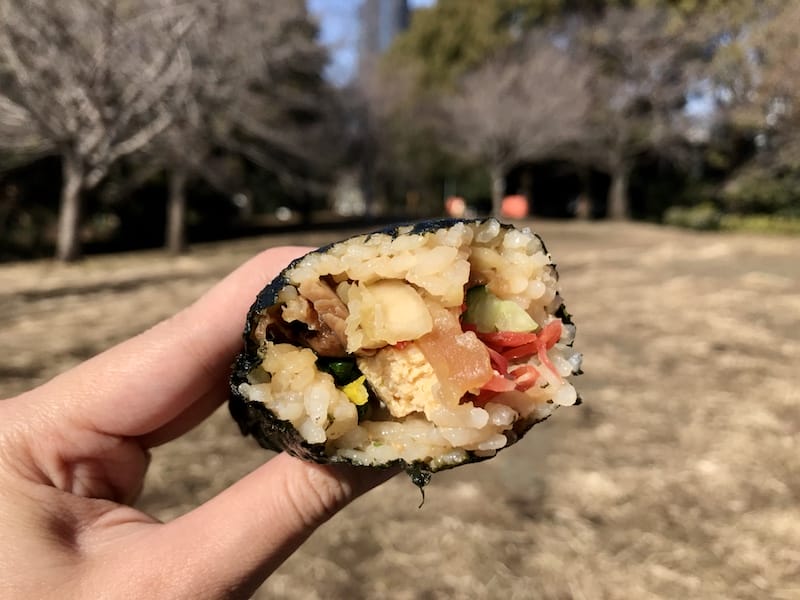
Thanks to wily marketing by the Nori Manufacturers Union of Osaka (to encourage nori consumption) and various supermarket chains, the practice of eating ehōmaki spread beyond the confines of the geisha district and across the nation during subsequent decades. Now, you can buy ehōmaki from major sushi restaurants, depachika (the basement-level food halls in department stores), supermarkets and even your local 7-11. Ingredients aren’t a hard and fast rule these days: There are all kinds of variations on ehōmaki, from super-luxe lobster, snow crab and fatty tuna rolls to chocolate roll cake versions.
This year, we made our ehōmaki reservations with Katsuo Shokudo. True to modern life, we’d found them via their official Instagram, and were quickly taken by Nagamatsu’s enthusiasm and love for skipjack shining through in every single Instagram post. Why not try order-made ehōmaki? Now here we were, picking them up from Nagamatsu’s basement diner in the backstreets of Shibuya.
Two ehōmaki, coming right up, said Nagamatsu, ticking our names off a list. Arigatsuo! Where are y’all from?
England and Malaysia, we replied.
England? Here’s another word you can use there: Oh my gatsuo!
We stopped laughing long enough to pay for our sushi rolls, then cycled over to a nearby park to eat them. If you’d been walking past around half past noon, you might have seen us in the center of a hillock, turning on the spot while looking at a phone to orient ourselves north-northwest.
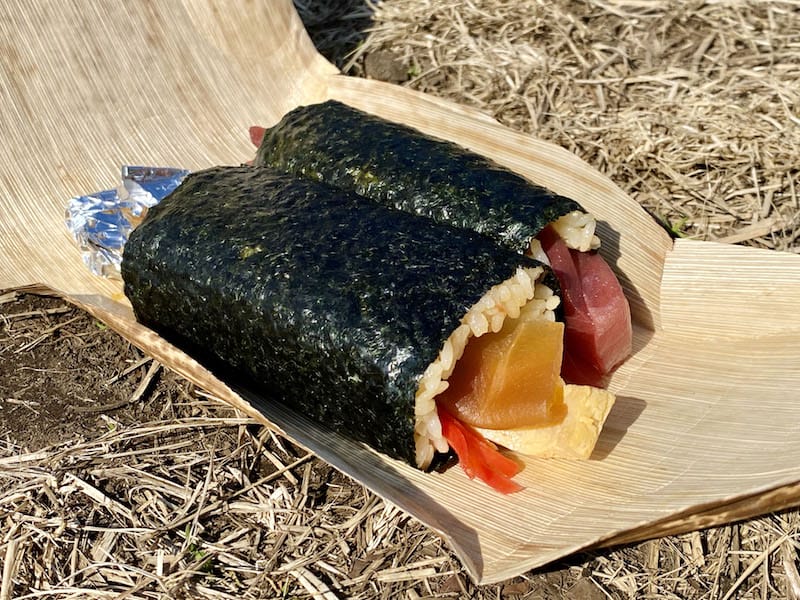
In a slight departure from tradition, we had two rolls each – “sea” and “mountain” ehōmaki. Made with 100% love, said the handwritten label. That much wasn’t in doubt. Having specified a pick-up time of 12pm, these had been freshly made right before we arrived, a far cry from off-the-shelf supermarket versions which sit around all day going stale.
The “mountain” ehōmaki hewed closer to tradition, a roll of tangy yuzu and red vinegar rice stuffed with daikon, spinach namul, lightly pickled Kintoki carrots, cucumber, braised shiitake, kanpyō and Japanese-style omelet. The “sea” version felt like a bonus, a second dose of good fortune for the year: skipjack sashimi, chopped scallions and homemade mayonnaise.
Tradition dictates that you make a wish and then eat ehōmaki in complete silence, lest any luck escape your mouth. Sitting on the grass on this sunny day, I wondered how many people across Tokyo were quietly eating rolls, and what they were wishing for.
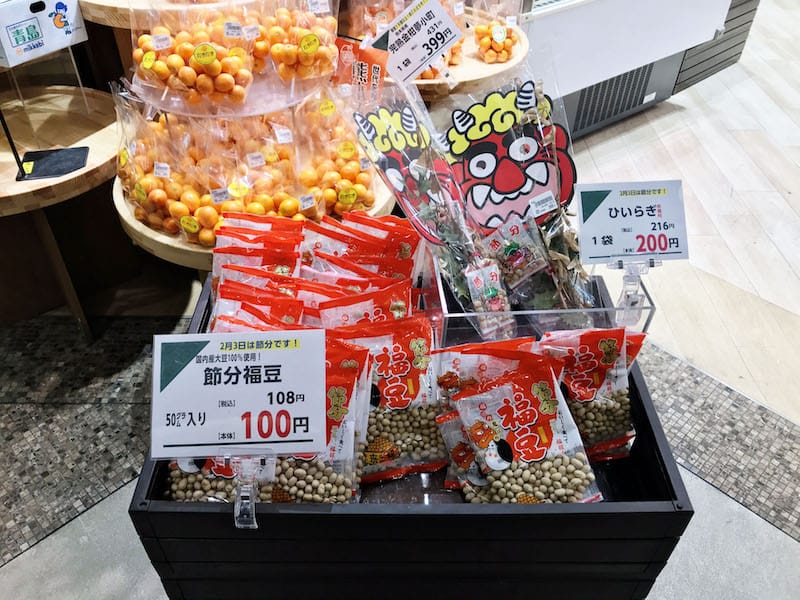
Later that evening, we tossed beans out of our front door. Oni wa soto! Fuku wa uchi! We felt a little foolish, but we chanted the words anyway, whisper-shouting so we didn’t wake our neighbors – under the current circumstances, we’d welcome any good fortune. The beans bounced and landed in the corridor of our apartment building, these little pellets representing all our bad luck for the year, and then we picked them back up again so we didn’t leave a mess behind. I suppose we’ll soon find out whether we also managed to leave the misfortunes of 2021 behind.

They see me rollin’
The Japanese food industry––particularly supermarket chains and convenience stores––has attracted much criticism in recent years for the tremendous amounts of wasted egg, rice, seafood and vegetables due to supplying far more ehōmaki than demanded. While you can pick up ehōmaki from convenience stores or supermarkets on Setsubun, for best results, reserve a roll in advance from your maker of choice (preferably a sushi restaurant you like). This ensures that you a) prevent food waste and b) have a freshly-made, higher-quality roll that hasn’t been sitting around for hours.
Alternatively, there’s little to stop you from attempting your own ehōmaki – not that everything needs bootstrapping, but we like to think of this as making your own luck. This recipe from Just One Cookbook is a great jumping-off point for creating your very own lucky direction rolls. You might even want to look at some rather outlandish modern ehōmaki for inspiration. We’ve even seen “Mexican-style ehōmaki” floating around in the Japanese Twittersphere. Maybe next year, a burrito can be our lucky direction roll.
Florentyna LeowFlorentyna Leow
Published on February 21, 2022
Related stories
March 11, 2016
TokyoQuick bite: Our food tour of Tokyo — the world’s biggest city, and perhaps its most delicious — explores the exquisite culinary heritage of a single neighborhood, Kichijoji, sampling our way through old school yakitori joints, gleaming department stores, avant grade taverns, hopping street food stands and much more. Any attempt to fully appreciate Tokyo,…
April 19, 2023
Tokyo | By Florentyna Leow
TokyoIt snowed in Tokyo on March 22 – a wet, rain-like snow that puddled as soon as it touched the ground, but snow nonetheless. It was un-springlike as the week before was sunny. Early spring is sly and tricky here. One moment the kawazu-zakura have blanketed trees in pink popcorn blooms, the next moment it’s…
June 22, 2022
Tokyo | By Florentyna Leow
TokyoIt’s a slow Tuesday lunch at Mochiku, a tiny 8-seater, counter-only tempura restaurant somewhere up a nondescript staircase in Ginza. This might sound like a thousand other places in Tokyo, but not all of those other places serve great tempura. I’ve just demolished a glorious tendon: a dozen pieces of hot, crisp, sauce-soused tempura including…







































